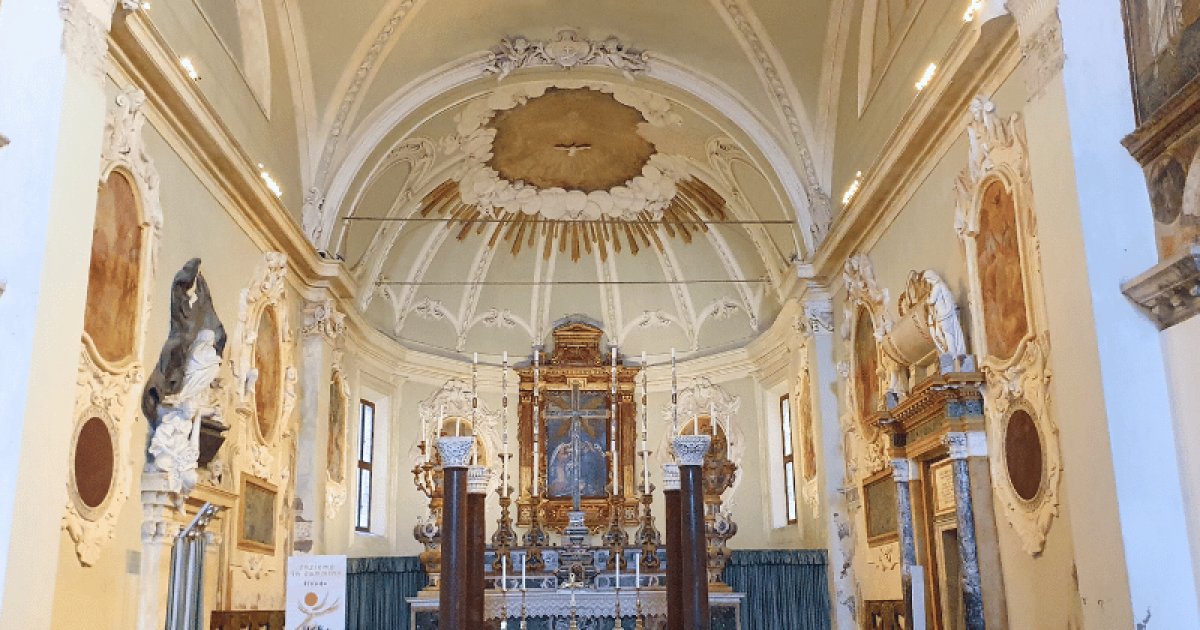BASILICA OF SANT'APOLLINARE NUOVO, Interior
 Language: English / USA
Language: English / USA
Stepping through the entrance, you are greeted by a large room with three naves divided by two rows of 12 columns whose Corinthian capitals support elegant arches. Above these are frescoes depicting saints dating back to the Renaissance.
The most striking decoration is on the sides of the nave. If you turn your back to the entrance and start looking at it from the upper band along the right side, you can see the repetition of pairs of doves alternating with images depicting scenes from the Passion and Resurrection of Christ, and parables and miracles related to the life of Jesus on the left side.
Below, at the height of the windows, there are several figures of saints and prophets all dressed in white.
But it is the wider band above the arches that is the most interesting.
I recommend you look at the two walls starting from the back of the church.
On the wall to your left you can see, as the first scene, a view of the port of Classe and the city, with two towers at the entrance to the port and three large ships; immediately afterwards you see a procession of 22 richly dressed and bejeweled Holy Virgins, all of whom have their heads covered by long white veils and holding a crown in their hands. They head toward an enthroned Madonna, surrounded by angels, holding the infant Jesus. The Virgins are preceded by the three Magi who bring gifts to the Virgin Mary.
On the wall to your right, however, the mosaic begins with a depiction of Theodoric's royal palace, which no longer exists, followed by a procession of 26 Holy Martyrs who are on their way to Christ the Redeemer, seated at the throne and surrounded, like Mary, by four angels.
Look carefully at this row of saints: they are all dressed in white except for two. The closest to Christ is St. Martin, and he wears a dark cloak. The basilica was named after him in 561. The fourth in line, wearing a golden robe, is St. Lawrence.
Finally, look up and take note of the splendid, coffered ceiling dating back to the 17th century. Isn't it a real wonder?



